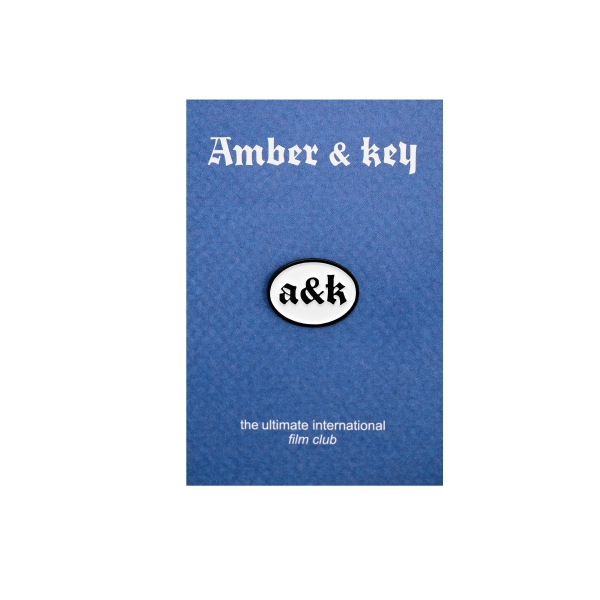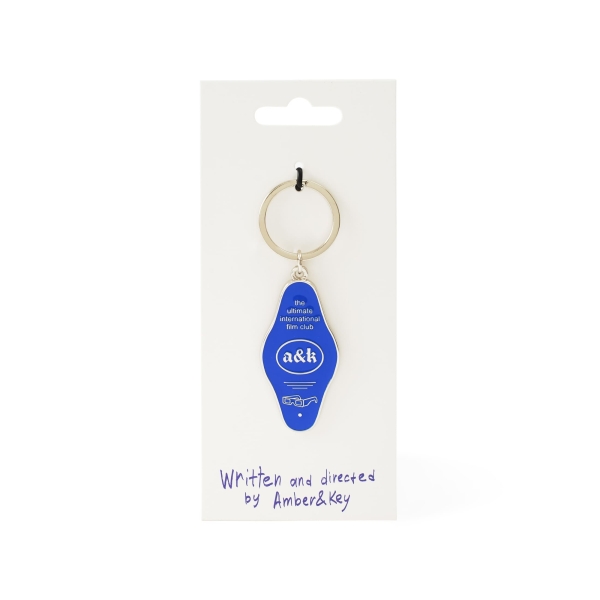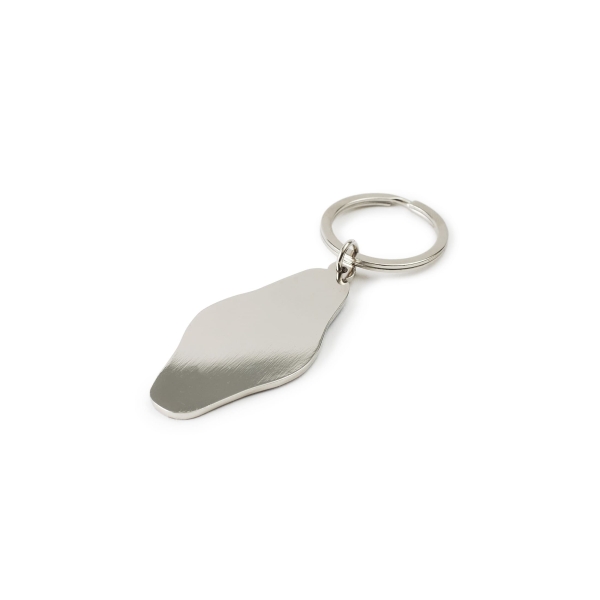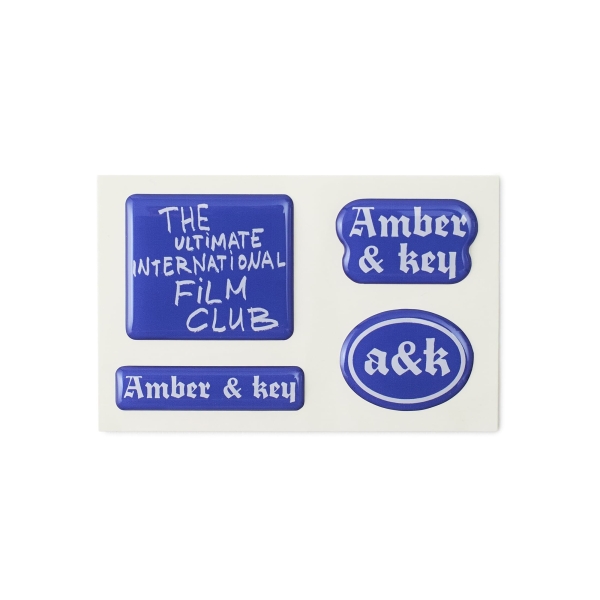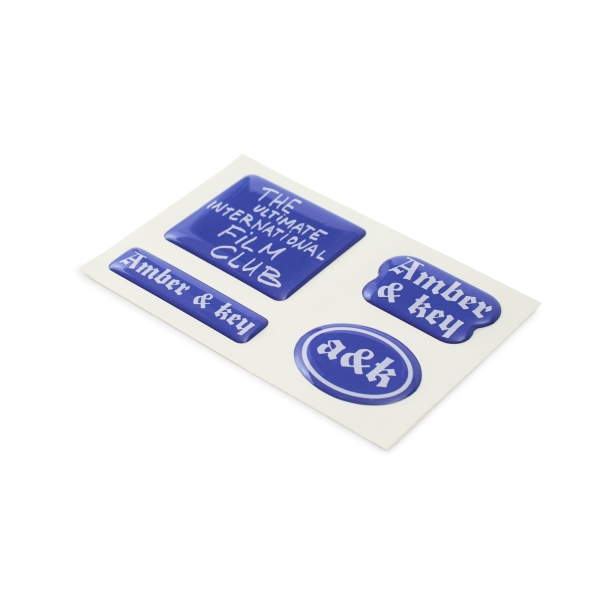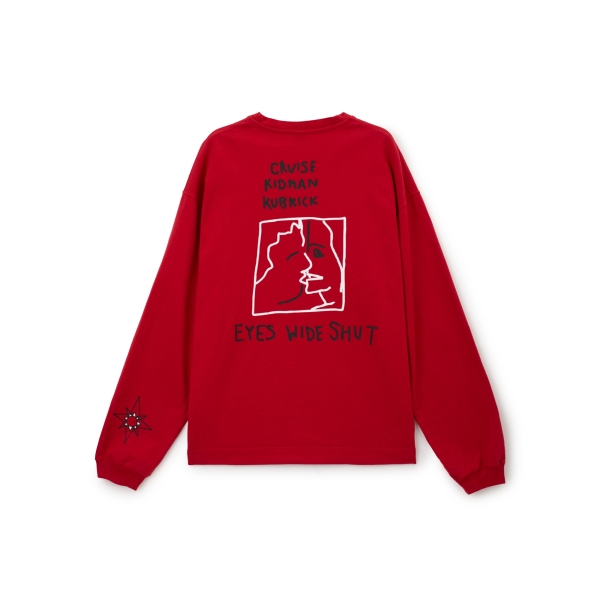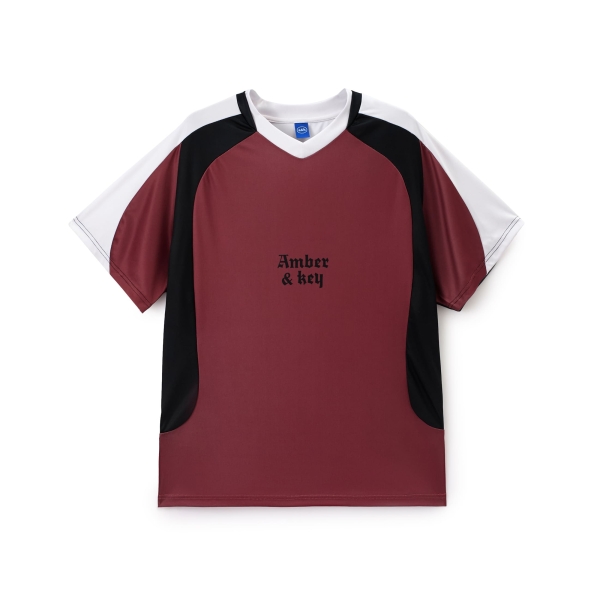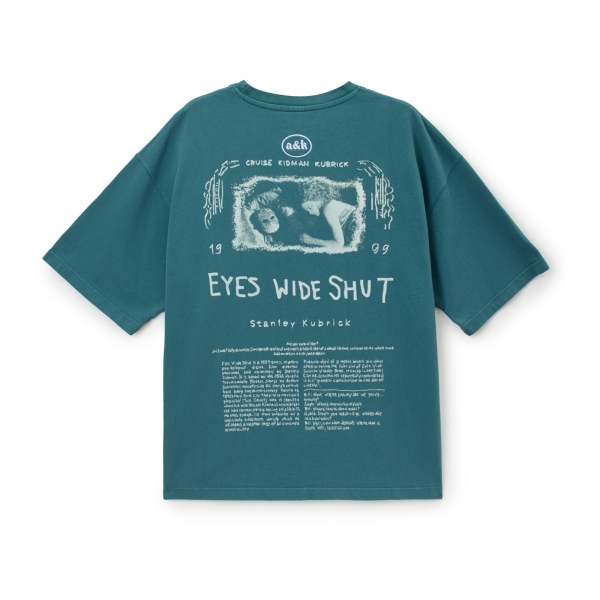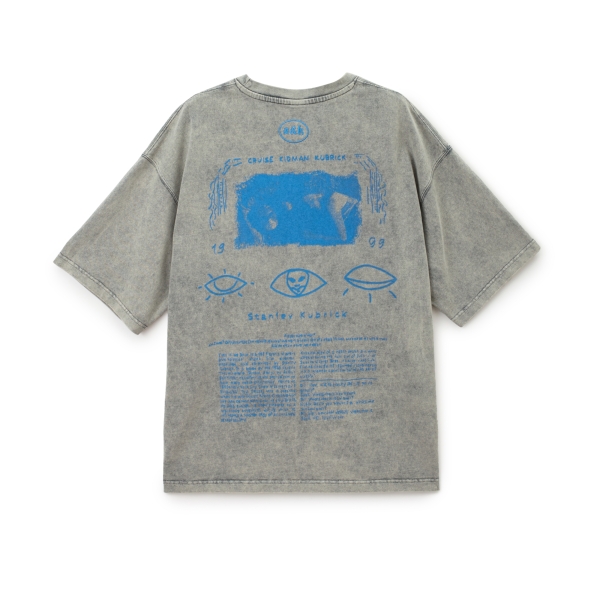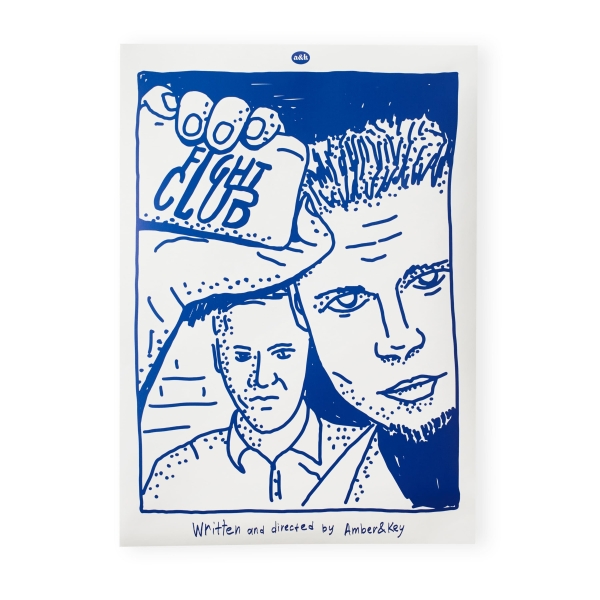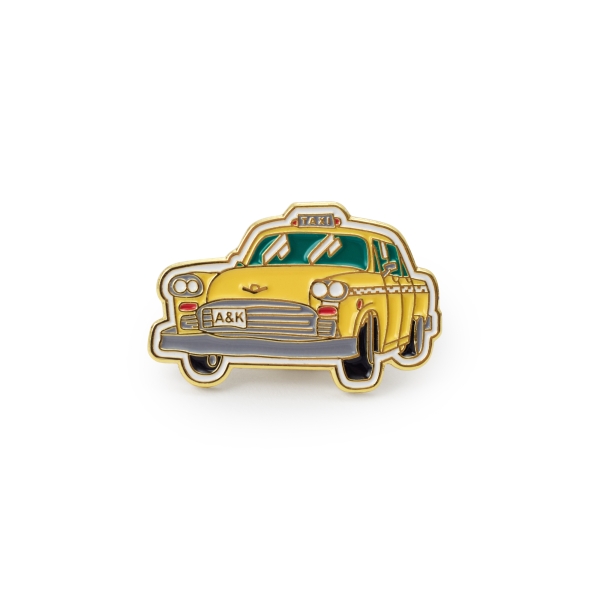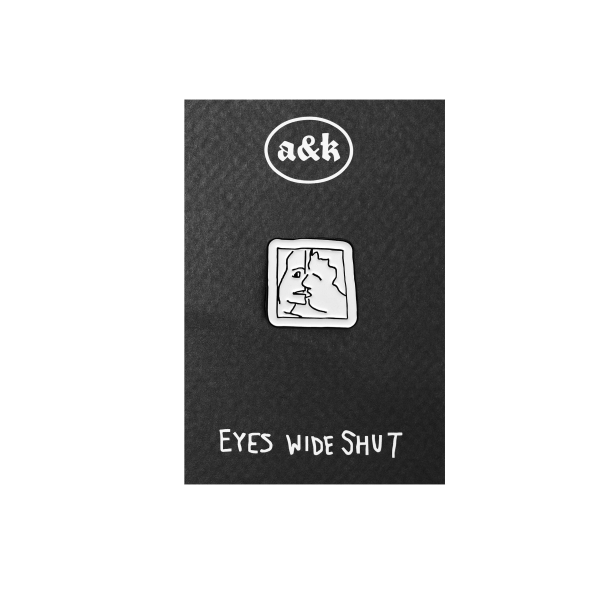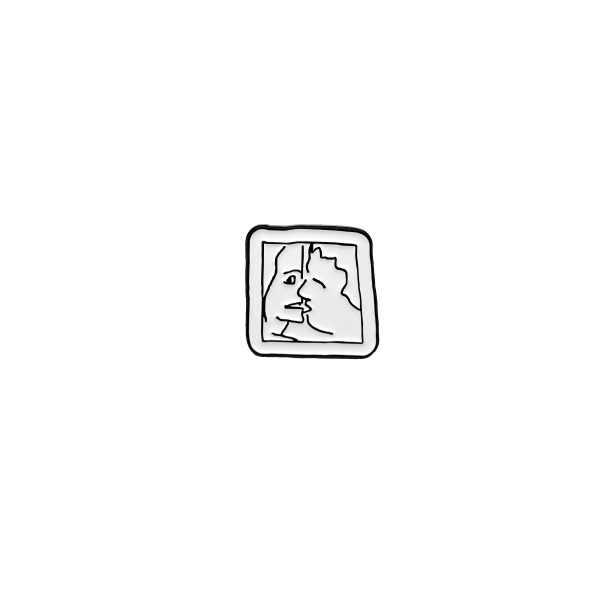In der Welt des Kinos gibt es zahlreiche faszinierende narrative Techniken, die Regisseure verwenden, um das Publikum zu fesseln und unvorhersehbare Handlungsdrehungen zu schaffen. Eine solche Technik ist die Verwendung von McGuffins. In diesem Artikel des Ultimate International Film Club tauchen wir in die Geschichte des McGuffins, seine Bedeutung, seine Funktionsweise und seine Verwendung in populären Filmen ein.

Pulp Fiction (1994)
• Akt 1: Einführung
Ein McGuffin ist ein Handlungselement, ein Objekt oder ein Ziel, das die Handlungen der Charaktere motiviert, aber für die Handlung selbst unbedeutend ist. Im Kino ist ein McGuffin ein Objekt, um das sich die Handlung dreht und das fast alle Charaktere begehren. Manchmal kann dieses Objekt außerhalb des Bildschirms und inaktiv sein, während die Helden danach suchen. Es dient dazu, die Handlung voranzutreiben, anstatt ein Schlüsselelement der Geschichte zu sein.
Der Begriff "McGuffin" wurde erstmals vom Regisseur Alfred Hitchcock und seinem Drehbuchautor-Kollegen Angus Macphail geprägt. Die erste bewusste Verwendung eines McGuffins kann als die "Pläne für ein neues Flugzeug" in Hitchcocks Die 39 Stufen betrachtet werden. In diesem Film suchen die Antagonisten nach den Flugzeugplänen, die den Konflikt und die gesamte Handlung des Protagonisten auslösen. Die Flugzeugpläne sind der McGuffin, und es ist leicht vorstellbar, dass es ein völlig anderes Objekt hätte sein können, wie ein Fläschchen mit einem neuen Virus oder ein Koffer voller Geld.
"Wenn Sie den McGuffin durch ein anderes Objekt ersetzen können und sich nichts Wesentliches ändert, dann haben Sie einen McGuffin!"
— Alfred Hitchcock
Der Begriff "McGuffin" wurde erstmals während einer Vorlesung Hitchcocks an der Columbia University im Jahr 1939 erwähnt. Der Regisseur erklärte ihn so: "Das Objekt, das jeder haben will... Für mich, den Geschichtenerzähler, ist [der spezifische] McGuffin nicht wichtig... Für Filmemacher ist der Prozess wichtiger als das Ergebnis – es geht darum, was die Charaktere tun und sagen, um das Objekt zu erreichen, nicht um das Objekt selbst."

Alfred Hitchcock – ein herausragender britischer Regisseur und Produzent, Synonym für fesselnde Handlungen, meisterhafte Spannungssteuerung und eine einzigartige Atmosphäre in der Filmkunst.
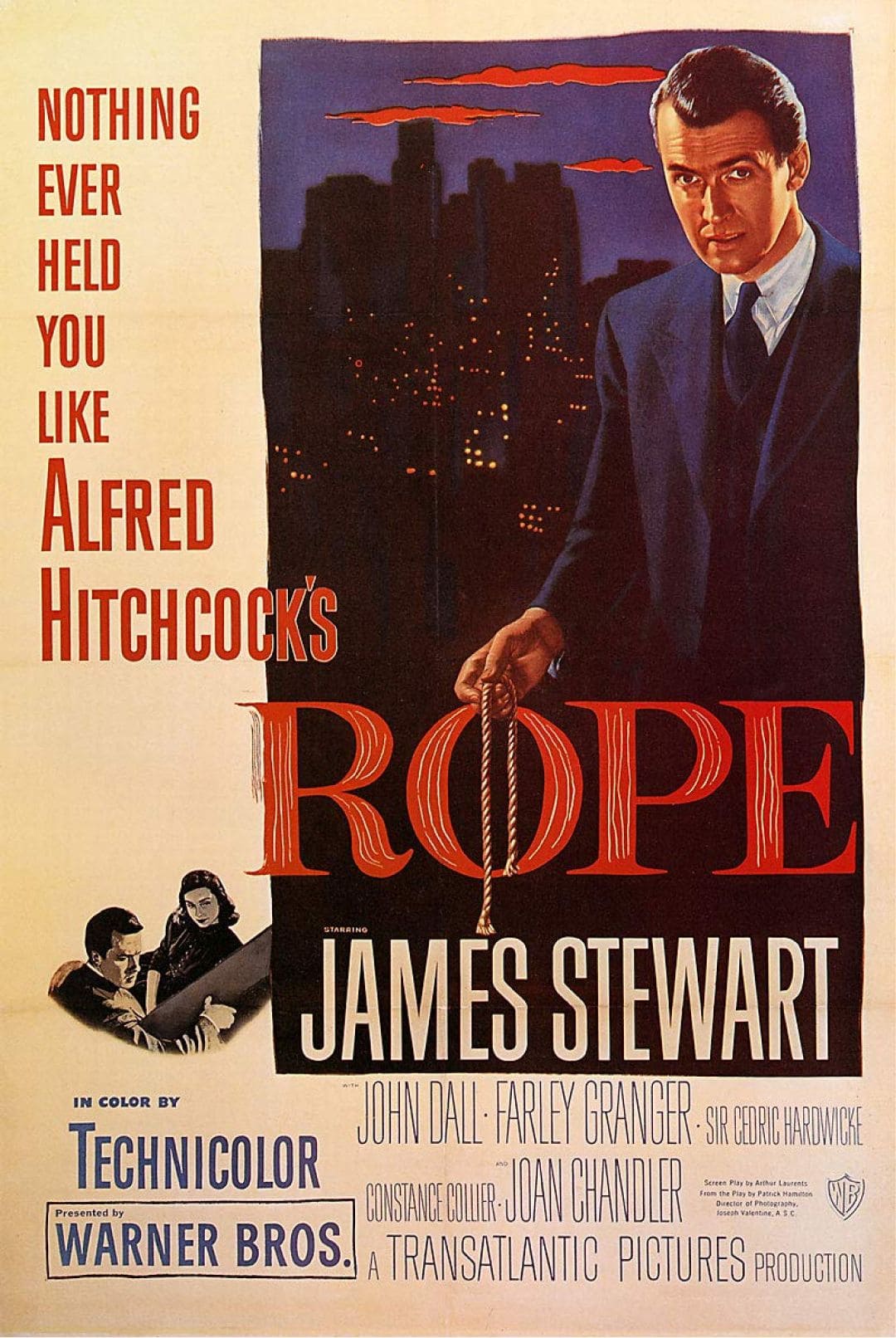
Rope (1948)

The 39 Steps (1935)

North by Northwest (1959)
Einige der beliebtesten Filme mit ikonischen McGuffins des Regisseurs Alfred Hitchcock, die das Amber&Key-Team zum Ansehen empfiehlt.
• Akt 2: Handlungsentwicklung
Ein McGuffin kann alles sein: ein wertvolles Artefakt, ein geheimes Dokument, ein Finanzkonto oder einfach ein Objekt, das die Charaktere erwerben oder schützen wollen. Was zählt, ist nicht so sehr das Objekt selbst, sondern sein Einfluss auf die Handlungen der Charaktere und die Entwicklung der Handlung. Der McGuffin veranlasst die Charaktere, Entscheidungen zu treffen, für etwas zu kämpfen oder sogar den Hauptkonflikt zu bilden.
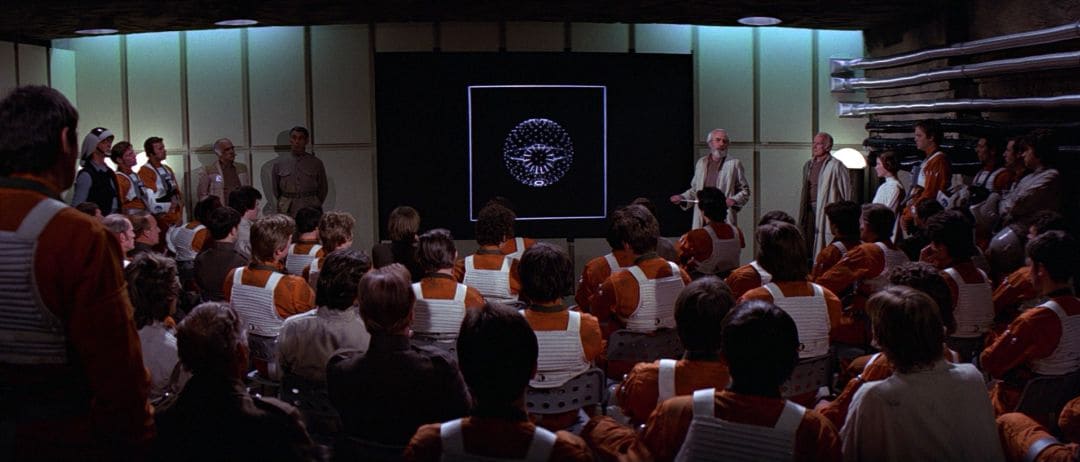
Star Wars. Episode IV - A New Hope
Ein Hinweis auf Hitchcocks McGuffin mit den Flugzeugplänen aus Die 39 Stufen ist in George Lucas' ikonischer Saga Star Wars zu sehen, nämlich die Pläne des Todessterns im Roboter R2-D2. George Lucas maß McGuffins eine viel größere Bedeutung bei, indem er sie nicht nur als Handlungsantreiber einbaute, sondern auch als Grundlage und Konflikt seiner Geschichten. Übrigens nannte er die "Bundeslade" seinen besten McGuffin.
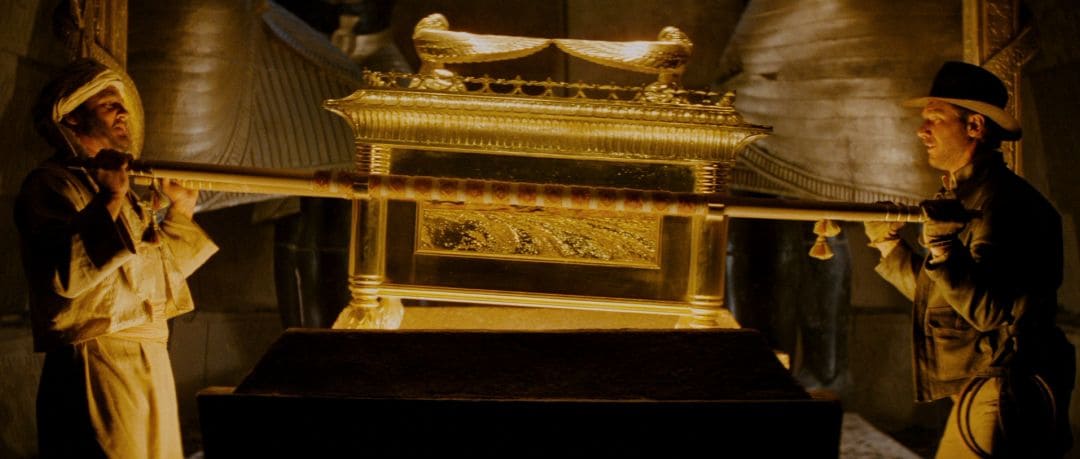
Raiders of the Lost Ark (1981)
"Die treibende Kraft im Film ist wirklich R2-D2. Er ist... was man in der Filmindustrie einen MacGuffin nennt."
— George Lucas
Einer der frühesten und am häufigsten zitierten McGuffins ist das Geld in Psycho, das sich wunderbar mit einem der Lieblingsfilme des Amber&Key-Redaktionsteams, No Country for Old Men der Coen-Brüder, überschneidet, wo der Hauptkonflikt zwischen den Charakteren ebenfalls auf Geld basierte.
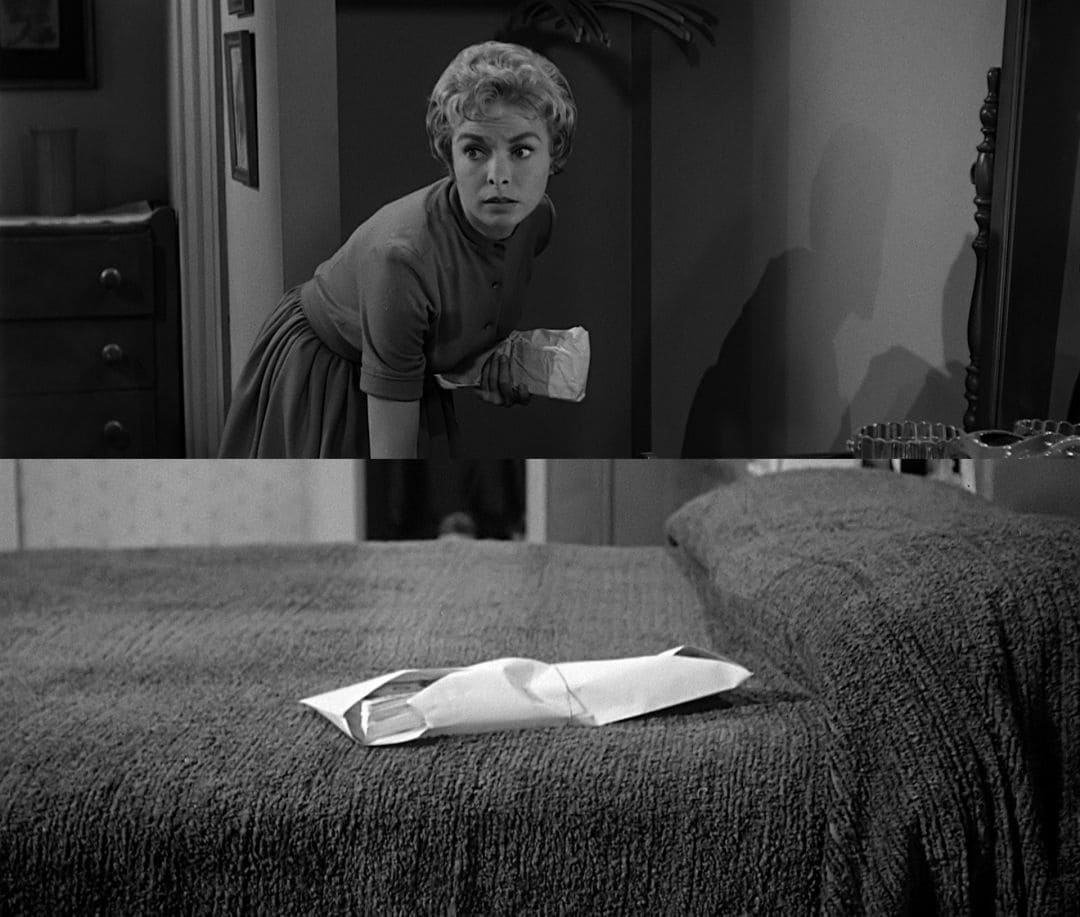
Psycho (1960)

No Country for Old Men (2007)
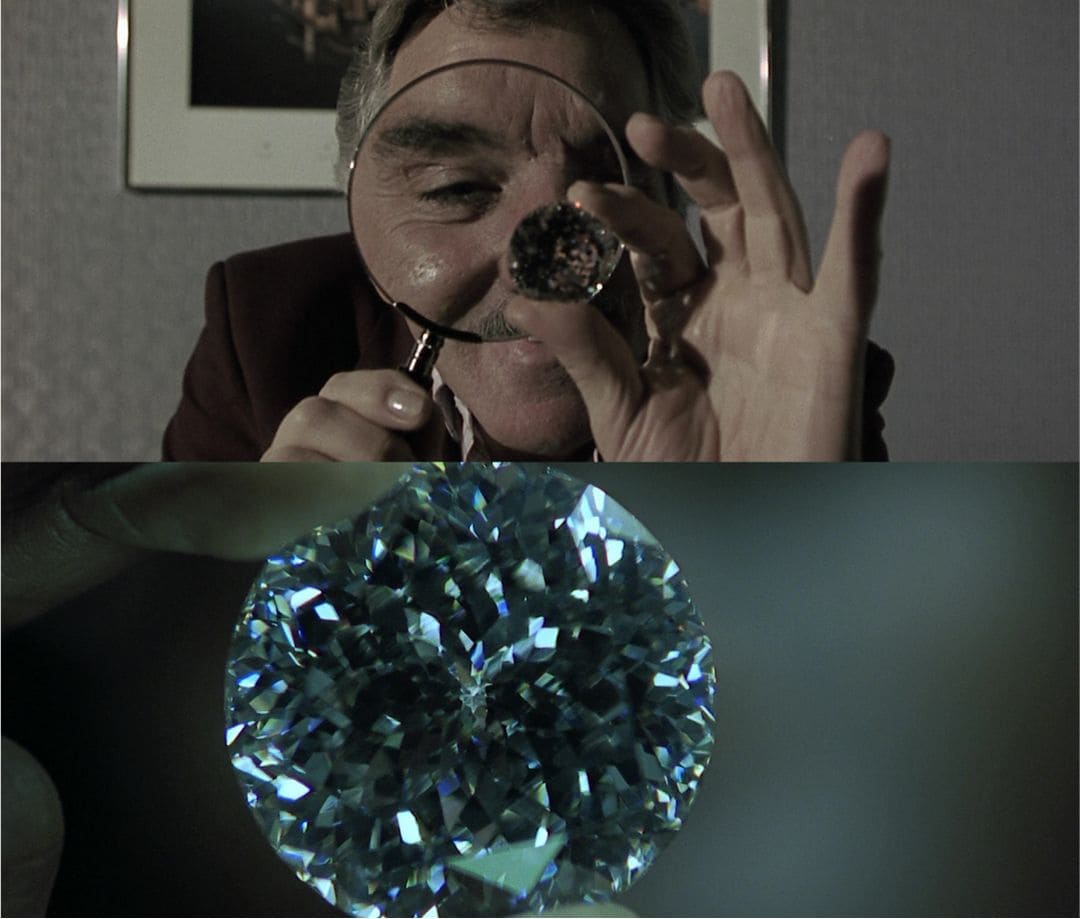
Snatch (2000)
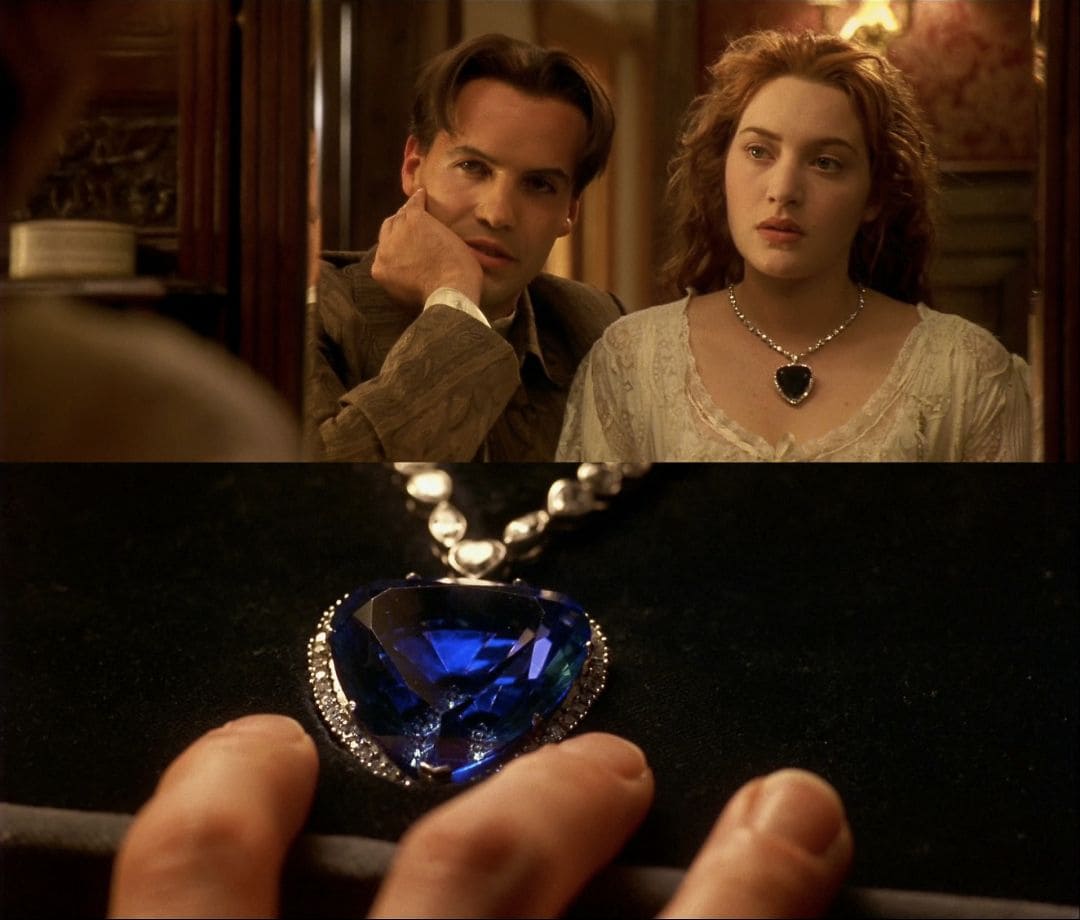
Titanic (1997)

T-shirt 3D from Amber&Key
Regisseur Joe Camp drehte 1979 einen Film mit zwei McGuffins – einer abgetrennten Hand und einem Koffer. Der Film wurde treffend Double McGuffin genannt.
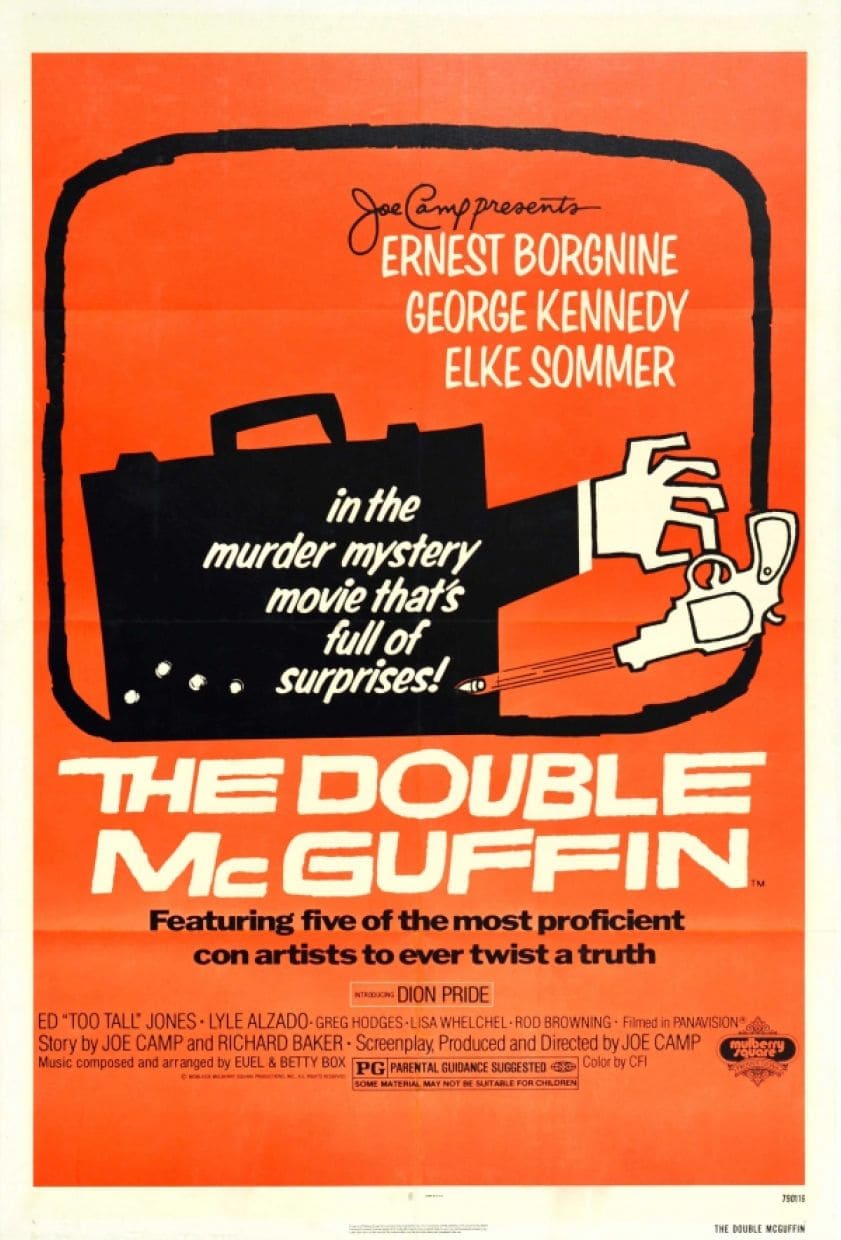
The Double McGuffin (1979)
Im Kino können McGuffins nicht nur Objekte, sondern auch abstrakte Konzepte, Orte und sogar Personen sein. Zum Beispiel sammeln in vielen Detektivgeschichten Spione Informationen, und die Polizei jagt Kriminelle. In Abenteuerfilmen streben die Helden oft danach, einen bestimmten Ort zu erreichen. Und in Francis Ford Coppolas Filmen Apocalypse Now ist der McGuffin niemand anderes als Marlon Brandos Charakter, Colonel Walter Kurtz. Seine Suche und Beseitigung werden zum zentralen Handlungsmotiv, obwohl seine Persönlichkeit und Bedeutung für die Handlung unklar und mysteriös bleiben und eher als Katalysator für die Handlungen des Films dienen.

Apocalypse Now (1979)
• Akt 3: Fazit
McGuffins sind ein mächtiges Werkzeug, um Spannung und Intrigen in der Handlung zu erzeugen. Die Erforschung der Rolle des McGuffins im Kino unterstreicht seine Bedeutung als Schlüsselelement der Struktur. McGuffins zeigen, wie selbst ein kleines Objekt oder Ereignis einen tiefgreifenden Einfluss auf die Entwicklung der Handlung und die Aufmerksamkeit des Zuschauers haben kann. Das Verständnis der Mechanismen des McGuffins ermöglicht es Filmemachern, fesselndere und einprägsamere Filme zu schaffen, und den Zuschauern, unvorhersehbare Handlungen zu genießen. Achten Sie beim nächsten Film auf dieses faszinierende Werkzeug, denn solche kleinen Haken wie die Uhr des Vaters von Butch Coolidge führen die Charaktere zum Höhepunkt und die Zuschauer zur Begeisterung.

Pulp Fiction (1994)
MacGuffin is nothin at all
— Sir Alfred Joseph Hitchcock

